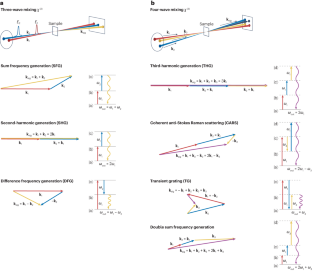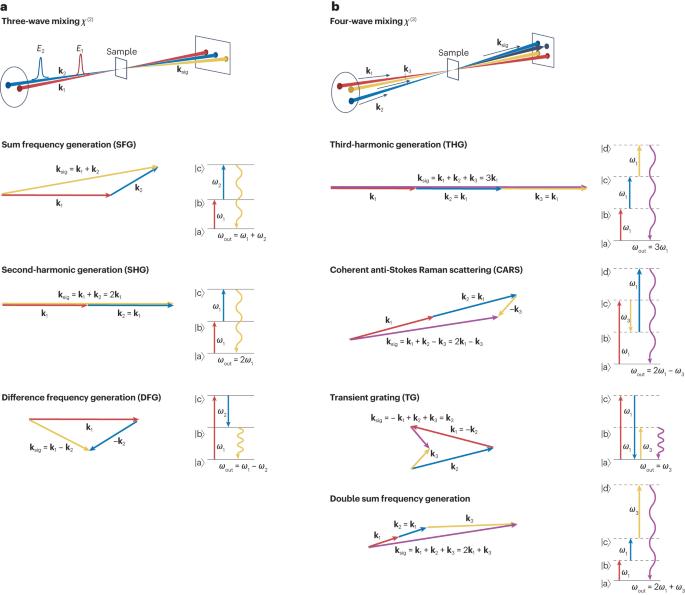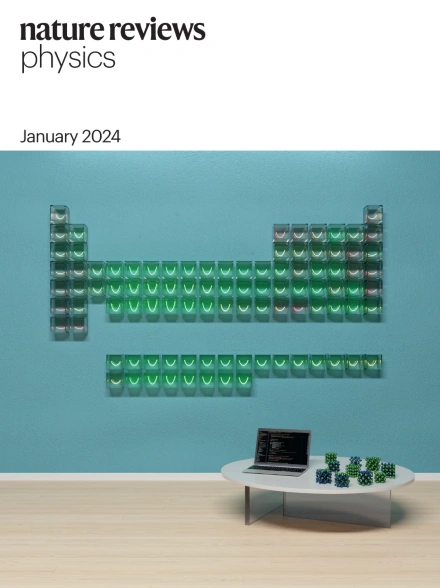Progress and prospects in nonlinear extreme-ultraviolet and X-ray optics and spectroscopy
IF 39.5
1区 物理与天体物理
Q1 PHYSICS, APPLIED
引用次数: 0
Abstract
Free-electron lasers and high-harmonic-generation table-top systems are new sources of extreme-ultraviolet to hard X-ray photons, providing ultrashort pulses that are intense, coherent and tunable. They are enabling a broad range of nonlinear optical and spectroscopic methods at short wavelengths, similar to those developed in the terahertz to ultraviolet regimes over the past 60 years. The extreme-ultraviolet to X-ray wavelengths access core transitions that can provide element and orbital selectivity, structural resolution down to the sub-nanometre scale and, for some methods, high momentum transfers across typical Brillouin zones; the possibilities for polarization control and sub-femtosecond time resolution are opening up new frontiers in research. In this Roadmap, we review the emergence of this field over the past 10 years or so, covering methods such as sum or difference frequency generation and second-harmonic generation, two-photon absorption, stimulated emission or Raman spectroscopy and transient grating spectroscopy. We then discuss the unique opportunities provided by these techniques for probing elementary dynamics in a wide variety of systems. New sources of extreme-ultraviolet to hard X-ray photons have enabled a wide range of short-wavelength nonlinear optical and spectroscopic methods over the past decade, and, for the future, offer unique opportunities to probe elementary dynamics in various systems.


非线性极紫外和 X 射线光学与光谱学的进展与前景
自由电子激光器和高次谐波生成台式系统是极紫外至硬 X 射线光子的新来源,可提供高强度、相干和可调谐的超短脉冲。它们可以在短波长范围内实现广泛的非线性光学和光谱学方法,类似于过去 60 年中在太赫兹到紫外系统中开发的方法。极紫外至 X 射线波长可获得核心跃迁,从而提供元素和轨道选择性、低至亚纳米尺度的结构分辨率,对于某些方法来说,还可实现典型布里渊区的高动量传递;偏振控制和亚飞秒时间分辨率的可能性正在开辟新的研究领域。在本路线图中,我们将回顾过去十多年来这一领域的发展历程,包括和频或差频产生和二次谐波产生、双光子吸收、受激发射或拉曼光谱以及瞬态光栅光谱学等方法。然后,我们将讨论这些技术为探测各种系统中的基本动力学提供的独特机会。在过去十年中,从极紫外到硬 X 射线光子的新来源促成了一系列短波长非线性光学和光谱学方法的出现,并在未来为探测各种系统中的基本动力学提供了独特的机会。
本文章由计算机程序翻译,如有差异,请以英文原文为准。
求助全文
约1分钟内获得全文
求助全文
来源期刊

Nature Reviews Physics
Multiple-
CiteScore
47.80
自引率
0.50%
发文量
122
期刊介绍:
Nature Reviews Physics is an online-only reviews journal, part of the Nature Reviews portfolio of journals. It publishes high-quality technical reference, review, and commentary articles in all areas of fundamental and applied physics. The journal offers a range of content types, including Reviews, Perspectives, Roadmaps, Technical Reviews, Expert Recommendations, Comments, Editorials, Research Highlights, Features, and News & Views, which cover significant advances in the field and topical issues. Nature Reviews Physics is published monthly from January 2019 and does not have external, academic editors. Instead, all editorial decisions are made by a dedicated team of full-time professional editors.
 求助内容:
求助内容: 应助结果提醒方式:
应助结果提醒方式:


